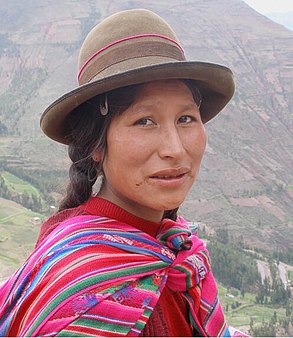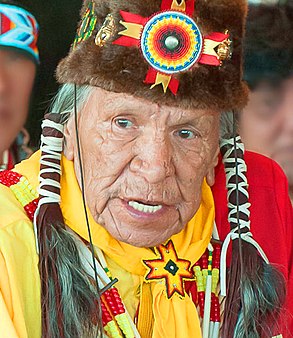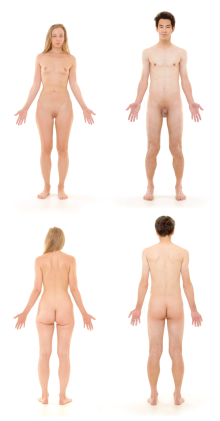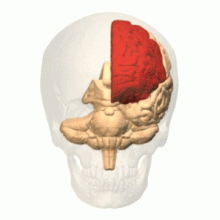Human
![]()
Homo sapiens is a redirect to this article. For other respective meanings, see Man (disambiguation) and Homo sapiens (disambiguation).
According to biological systematics, humans (Homo sapiens, Latin for "understanding, understanding" or "wise, clever, prudent, reasonable man") are a species of the genus Homo from the family of apes, which belongs to the order of primates and thus to the higher mammals. General characteristics of humans and particular forms of human coexistence are studied in anthropology, ethnology and sociology.
In the course of the phylogeny of man, hominization and socio-cultural evolution, characteristics have emerged which formed the prerequisites for man to become a highly socialization- and culture-dependent being. These include a long-lasting childhood, the ability to acquire language and to engage in communal work, and the formation of particularly complex social bonds.
Through their consciousness, the temporal dimension of existence as well as a reflected relationship to themselves opens up to people. This leads to questions concerning one's own existence, such as personal freedom, the human position in nature, moral principles of coexistence and the meaning of life. In the course of reflecting on the relationship to other living beings, many cultures have developed an image of man in the course of the history of mankind so far, which separates mankind from the animal world and contrasts it with it. Such a special position was established, for example, by creation narratives that ascribe a separate origin to humans, or by the determination of humans as rational beings. But it is also echoed in modern ideas such as that of human dignity.
Humans are the only recent species of the genus Homo. It has been fossilized in Africa for about 300,000 years, where it evolved from Homo erectus via an evolutionary link known as archaic Homo sapiens. Between Homo sapiens, the Neanderthals and the Denisova humans there was demonstrably - presumably several times - a gene flow.
Further, but much younger fossil evidence exists for the species from all continents except Antarctica. Of the extant great apes, chimpanzees are phylogenetically most closely related to humans, ahead of gorillas. As of October 2018, the global human population comprised approximately 7.63 billion individuals. The development of technological civilization led to extensive anthropogenic influence on the environment (progressive hemeroby), so it has been proposed to call the current Earth Age the Anthropocene.

>0.13% Transgender

49.5 % Women

9 % over 64 years

50 % from 25 to 64 years

16 % from 15 to 24 years

50.5 % Men

Infant, 10 days old

25 % under 15 years
Etymology and species name
The word Mensch is attested in Old High German since the 8th century in the spelling mennisco (masculine) and in Middle High German in the spelling mensch(e) (masculine or neuter) meaning "man". The word is a nounification of Old High German mennisc, Middle High German mennisch for "manly" and is traced back to an Indo-European root word in which the meaning man and man fell into one - still preserved today in man. The neuter (das Mensch) did not have a derogatory connotation until the 17th century and until then referred in particular to women of lower social rank.
The name of the species Homo sapiens (classically [ˈhɔmoː ˈsapieːns], common pronunciation [ˈhoːmo ˈzaːpiəns], after Latin homo sapiens 'insightful/wise man') was coined in 1758 by Carl von Linné in the tenth edition of his work Natura Naturae. The current Catalog of Life of the Integrated Taxonomic Information System also identifies "Homo sapiens Linnaeus, 1758" as the "accepted scientific name." From the 1930s until the 1990s, modern humans were referred to as Homo sapiens sapiens, and Neanderthal man was referred to as Homo sapiens neanderthalensis. However, this classification of Neanderthal as a subspecies of Homo sapiens is currently considered outdated.
Features of the body
→ Main article: Human body
The human body is the subject of anatomy, human biology and medicine, among others. The number of bones in humans (individually different) is 206 to 214 in adults. The skeleton of infants still has more than 300 bones, some of which grow together over time.
Human height is partly inherited, but also depends on life circumstances such as diet. Gender also plays a role: men are taller than women on average. Since the 19th century, the average height in Central Europe or Germany has risen from 167.6 cm (men) / 155.7 cm (women) to 178 cm (men) / 165 cm (women).
For human body weight, there is no medical consensus as to what should be considered "desirable" or "natural," especially since body weight is also dependent on body size. Nevertheless, the World Health Organization (WHO) has helpfully defined a normal range based on the body mass index (BMI), which includes a BMI of 18.50 to 24.99.
See also: Human organs and Human sex differences
The following are some of the key characteristics of the species, especially in comparison to other apes and other primates.
Upright gait
→ Main article: Bipedality
Humans have an upright gait (bipedalism), which in itself is nothing unusual in the animal world, but is rare among mammals. The upright gait enables humans to stand, walk and run on two legs. He thus has two gaits. Especially in infancy, however, he still has a large repertoire of other movements (crawl) and can also develop their own (eg hop run).
Humans do not have a prehensile foot like most other primates, but a foot with shortened toes and an adjacent big toe. In return, the human hand is no longer used for locomotion. Untypically for an ape, the arms are shorter than the legs in humans. As with all humanoid species, the tail is missing. Another consequence of the development of the upright gait in humans is their double-S-shaped spine and the strongly developed buttocks, which make the upright posture and locomotion possible.
The upright gait must first be learned individually, which takes about one to one and a half years from birth.
Brain
The human brain is similar in structure to the brains of other primates, but is larger in proportion to body size. The number of nerve cells in the brain of an adult human is about 86 billion, and about 16 billion in the cortex of the cerebrum. In comparison, the brain of a rhesus monkey has about 6.4 billion nerve cells and the brain of an elephant has about 257 billion, of which 5.6 billion are in the cerebral cortex (cortex cerebri). But in the pilot whale, the number of neurons in the neocortex alone is about 37 billion, about twice as many as in humans.
What is particularly pronounced in the human brain is the cerebral cortex, especially the frontal lobes, to which executive functions such as impulse control, emotional regulation, attentional control, goal-directed initiation and sequencing of actions, motor control, observation of action results and self-correction are assigned. The area of the cerebral cortex responsible for vision, as well as zones that play a role in language, are also significantly enlarged in humans.
On the basis of fossil finds it is provable that the upright bipedal gait of humans developed clearly earlier than the strong enlargement of the brain. The enlargement of the brain occurred simultaneously with a reduction of the masticatory muscles.
The human face is flatter than an ape skull, which has a protruding snout. On the other hand, due to the retraction of the upper and lower jaws, man has a protruding chin. With the sharp increase in brain volume, a high forehead and his characteristic skull shape emerged.
Skin and hair
Humans have a special ability to dissipate heat through sweating. No other primate has such a high density of sweat glands as humans. The cooling of the body by sweating is supported by the peculiarity that man, unlike most mammals, has no (dense) fur. While his body hair is only slightly developed, his head hair grows without naturally limited length. Some of the remaining body hair does not develop until puberty: the pubic and axillary hair, as well as chest and beard hair in males.
One consequence of furlessness is rapid cooling in cold weather due to lower thermal insulation. However, man learned to compensate for this by using fire and making dwellings and clothing. Both of these also enable him to survive in colder regions. Another disadvantage of being furless is the increased risk for the skin to be damaged by ultraviolet light, since fur is an important sunscreen. The different skin color depending on the region of origin is interpreted as an adaptation to the varying intensity of ultraviolet light coming from the sun, depending on the latitude (→ Evolution of skin colors in humans).

The human body: Woman and man, viewed from the front and back

Popular representation of the evolution of the upright gait

Brain skull of a recent Homo sapiens

Rotationally animated model of a human brain (without right cerebrum; frontal lobe marked in red).
Questions and Answers
Q: What does Homo sapiens mean?
A: Homo sapiens is a Latin phrase that translates to "wise man".
Q: What order do humans belong to according to Carolus Linnaeus?
A: According to Carolus Linnaeus, humans belong to the mammalian order of primates.
Q: What are some of the closest living relatives of humans?
A: Humans' closest living relatives are chimpanzees, bonobos, gorillas and orangutans.
Q: How do humans move?
A: Humans are bipedal, meaning they walk on two legs.
Q: What sets humans apart from other species?
A: Humans have a complex brain which is much larger than that of other living apes. This allows them to use language, make ideas and feel emotions, as well as use tools more than any other species.
Q: Where did humans originate from?
A: Humans originated from Africa.
Q: How many people were estimated to be living on Earth in 2022?
A: In 2022 it was estimated that there were over 7850 million people living on Earth.
Search within the encyclopedia